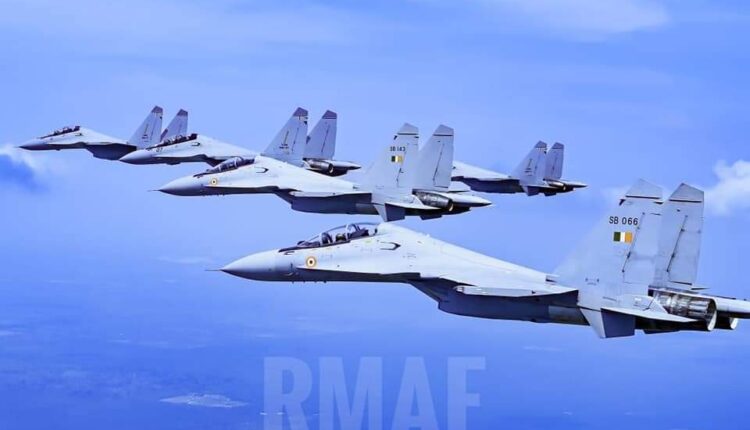RMAF Reportedly Interested in Acquiring “BrahMos ALCM” Missiles for Su-30MKM Fleet
According to an Indian defense website, which did not disclose the source of its report, the BrahMos missile variant that has caught the RMAF's attention is the Air Launched Cruise Missile (ALCM).
(DEFENCE SECURITY ASIA) – The Royal Malaysian Air Force (RMAF) is reportedly showing significant interest in acquiring India’s “BrahMos” missile for use on its Sukhoi Su-30MKM fighter jets.
According to an Indian defense website, which did not disclose the source of its report, the BrahMos missile variant that has caught the RMAF’s attention is the Air Launched Cruise Missile (ALCM).
With a strike capability of up to 290km, the BrahMos ALCM variant would enhance the maritime strike capabilities of the Su-30MKM fighter jets.
The RMAF currently operates 18 Su-30MKM fighter jets, which are a cornerstone of its air power.
However, the Indian defense website noted that integrating the Indian-made cruise missile on the Su-30MKM might require additional modifications, based on the experiences of the Indian Air Force (IAF).

The IAF had to reinforce the structure of its Su-30MKI aircraft before they could carry the BrahMos ALCM, which has a total weight of 2.5 tons.
Given the similarities between the RMAF’s Su-30MKM and the IAF’s Su-30MKI, it is likely that the RMAF will also need to reinforce the structure of its Su-30MKM jets before they can be equipped with the BrahMos ALCM.
These structural reinforcements involve modifications to the aircraft’s airframe to enable it to withstand the forces generated when launching the cruise missile.
The Indian defense website also mentioned that if the RMAF is genuinely interested in acquiring the BrahMos ALCM, it might need to collaborate with Hindustan Aeronautics Ltd (HAL).
HAL was responsible for modifying the IAF’s Su-30MKI aircraft to accommodate the BrahMos ALCM and for assembling the majority of the IAF’s Su-30MKI fleet.
HAL has assembled a significant portion of the over 250 Su-30MKI aircraft in the IAF’s inventory.

The Indian defense website further stated that if the RMAF does indeed acquire the BrahMos ALCM, it would signify closer defense ties between Kuala Lumpur and New Delhi.
At this time, Prime Minister Datuk Seri Anwar Ibrahim is in New Delhi for a two-day working visit to India.
During his visit, Anwar is scheduled to meet with India’s Foreign Minister, Prime Minister, and President.
He and his Indian counterpart, Narendra Modi, will also witness the signing of agreements between companies and government agencies from both countries.
It is unclear whether any of these agreements pertain to the defense sector.
The BrahMos missile is a supersonic missile capable of cruising at speeds of 2.8-3 Mach and can be launched from warships, mobile launchers, or fighter jets.
With its supersonic speed and low radar signature, the BrahMos can strike targets at a distance of 290km, and in its extended-range variant, the range has been increased to approximately 350km.

The missile has a payload capacity of around 300kg.
The BrahMos missile is based on the “Onyx” missile developed by Russia.
Russia has maintained strong military ties with India for decades.
BrahMos Aerospace, the company that developed the BrahMos missile, is a joint venture between India’s Defence Research and Development Organisation (DRDO) and Russia’s NPO Mashinostroyenia (NPOM).
The BrahMos missile is a medium-range cruise missile utilizing ramjet engine technology and can be launched from various platforms, including air, sea, submarines, and coastal defense systems.
Currently, the Philippines is the only Southeast Asian country to have acquired the BrahMos missile system, having signed a $374 million contract with BrahMos Aerospace to procure the missile in its coastal defense system variant. — DSA



Comments are closed.